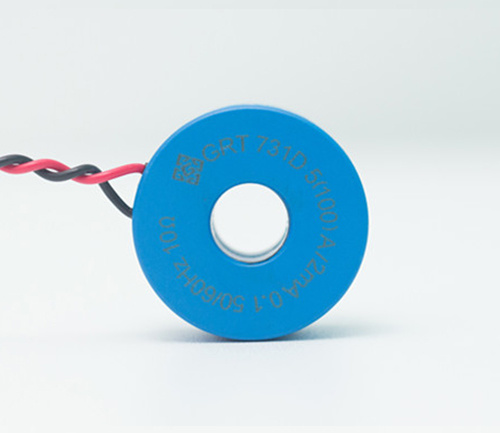
NEWS
Understanding the Crucial Role of Current Transformers in Power Systems
Updated:
2025-06-08 14:00
1. Introduction to Current Transformers
Current transformers (CTs) play a **pivotal role in the functionality** of power systems, acting as essential devices for measuring current and providing electrical isolation. They convert high currents into lower, manageable values that can be easily processed by relays and measuring devices. This article aims to delve into the **importance of current transformers**, their operational principles, types, installation best practices, and their influence on the overall efficiency of power systems.
2. What Are Current Transformers?
At their core, current transformers are **electrical devices** designed to measure alternating current (AC) by producing a reduced current that is proportional to the current flowing through the primary conductor. They achieve this transformation through electromagnetic induction, allowing for **safe and accurate measurements** without directly exposing measuring instruments to high voltages.
Current transformers are characterized by a few critical components:
- **Primary Winding**: This is connected to the high-current circuit.
- **Secondary Winding**: This is where the output current is generated, typically at a much lower value.
- **Core**: Usually made of ferromagnetic materials, the core facilitates the induction process.

3. Functions of Current Transformers in Power Systems
Current transformers serve several key functions in power systems:
- **Current Measurement**: The primary role of CTs is to measure the current flowing through a conductor. This is critical for monitoring power consumption and ensuring efficient operation.
- **Protection**: CTs facilitate the operation of protective devices in power systems. By providing accurate current measurements, they enable relays to detect faults and initiate protective actions, thereby preventing equipment damage.
- **Isolation**: By stepping down the current to a safer level, CTs isolate high-voltage systems from low-voltage measuring instruments, enhancing safety for operators and maintenance personnel.
- **Energy Management**: They play a vital role in energy management systems, allowing for accurate load forecasting and system optimization.
4. Types of Current Transformers
Several types of current transformers are available, each tailored to specific applications:
- **Wound Current Transformers**: These have a primary winding that is a part of the circuit, typically used for high-current applications. They are often more accurate and are suitable for billing purposes.
- **Toroidal Current Transformers**: Featuring a ring-shaped core, these CTs are widely used for their compact size and ease of installation. They are suitable for various applications, including residential and industrial systems.
- **Bar-type Current Transformers**: These are designed for busbar applications and can handle very high currents. They are often used in substations and large industrial facilities.
- **Split-Core Current Transformers**: These allow easy installation over existing conductors without needing to disconnect them. They are excellent for retrofits and temporary measurements.
5. Installing Current Transformers: Best Practices
Proper installation of current transformers is essential to ensure their accurate performance and longevity. Here are some best practices:
- **Location**: Install CTs in locations that are easily accessible for maintenance while ensuring they are shielded from environmental elements that may cause damage.
- **Orientation**: Ensure that CTs are installed in the correct orientation, as specified by the manufacturer, to maintain measurement accuracy.
- **Connection**: Connect the secondary winding correctly to avoid damaging the CT due to excessive current. Always ensure the secondary circuit is not open while the primary circuit is energized.
- **Calibration**: Regular calibration is necessary to ensure measurement accuracy. This should be done in accordance with industry standards and manufacturer guidelines.
6. Current Transformers in Modern Power Systems
As power systems evolve, the role of current transformers is expanding. Modern technologies such as **smart grids** and **IoT (Internet of Things)** integration are changing the landscape of power monitoring and management. Current transformers are increasingly being utilized in conjunction with digital relays and monitoring systems to provide real-time data and analytics.
The integration of current transformers with advanced technologies leads to enhanced reliability and performance in power systems. This integration allows for predictive maintenance, real-time fault detection, and improved energy efficiency, ultimately resulting in reduced operational costs.
7. The Impact of Current Transformers on System Efficiency
Current transformers have a significant impact on the overall efficiency of power systems. By providing accurate measurements, they enable operators to:
- **Optimize Load Management**: With precise current measurements, utilities can manage loads more effectively, reducing peak demand and improving reliability.
- **Enhance Protection Coordination**: Accurate data from current transformers allows for better coordination of protective devices, minimizing downtime and operational disruptions.
- **Reduce Energy Losses**: By monitoring and managing energy flows more effectively, current transformers help reduce losses in the system, thus improving the overall energy efficiency.
Overall, effective use of current transformers can lead to significant cost savings and improved reliability in power distribution systems.
Current transformers play an indispensable role in the reliability and efficiency of modern power systems. Their ability to provide accurate current measurements while ensuring safety and facilitating protection schemes makes them critical components in electrical infrastructure. As technology advances, current transformers will continue to evolve, integrating with modern systems and enhancing their performance. Understanding their functions, types, and best practices for installation can significantly benefit power system operators, contributing to safer and more efficient energy management.

